Secrets of a suburban oasis – Oaklands Wetland
In early October, NGT kicked off our Grand Tour of Ecological Restoration, with Day 1 starting at Oaklands Wetland in Adelaide’s inner southern suburbs. Here NGT has been working with the City of Marion to breed threatened fish. The Southern Purple-spotted Gudgeon has been thriving in one of the 10 wetland ponds, breeding up to be released into the wild. This little fish was declared regionally extinct in the 1990s, but a small population was rediscovered in 2002, and since then we have been working with partner organisations and the state government agencies to set up surrogate breeding areas like the one at Oaklands Wetland. You can read about the whole Grand Tour here, and download the information handouts.
During the Day 1 tour we pulled up fyke nets that had been set overnight in two ponds. To our surprise we found that the gudgeons has migrated into a second pond and were some of the biggest fattest gudgeons we had ever seen! We also found carp, which unfortunately have been regularly released into the wetland by unknown people, as well as a bunch of aquarium fish (rosy barbs). These non-native fish cause lots of problems as the carp muddy-up the water and other introduced fish feed on the eggs and young of native fish. As a result of non-native fish introductions, City of Marion and NGT staff must drain the wetlands annually and remove introduced species (whilst keeping the natives safe in holding tanks).
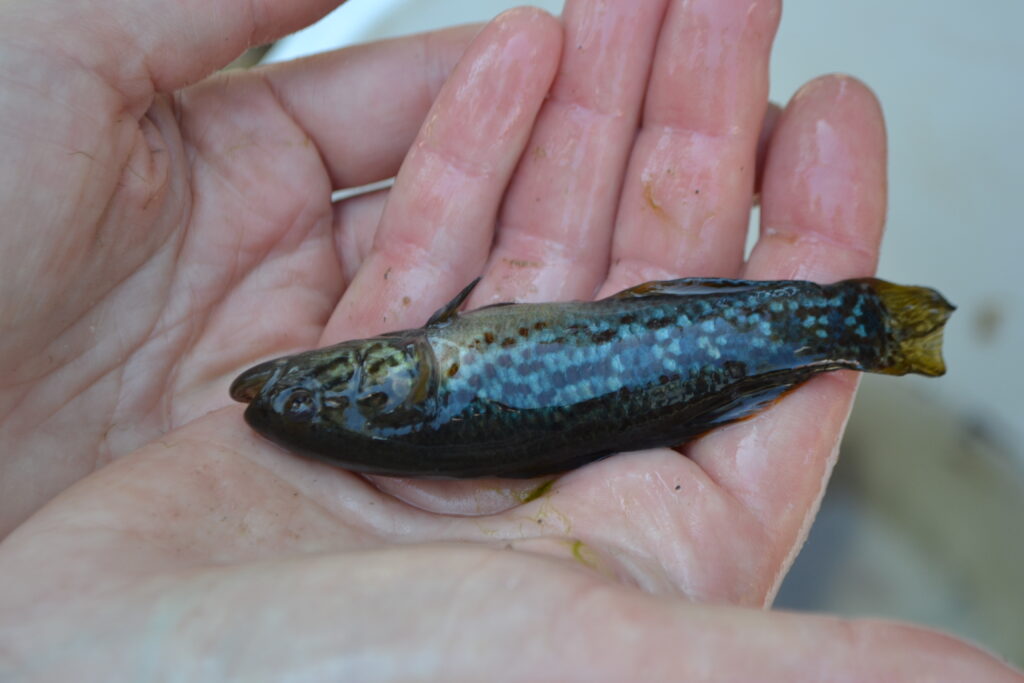
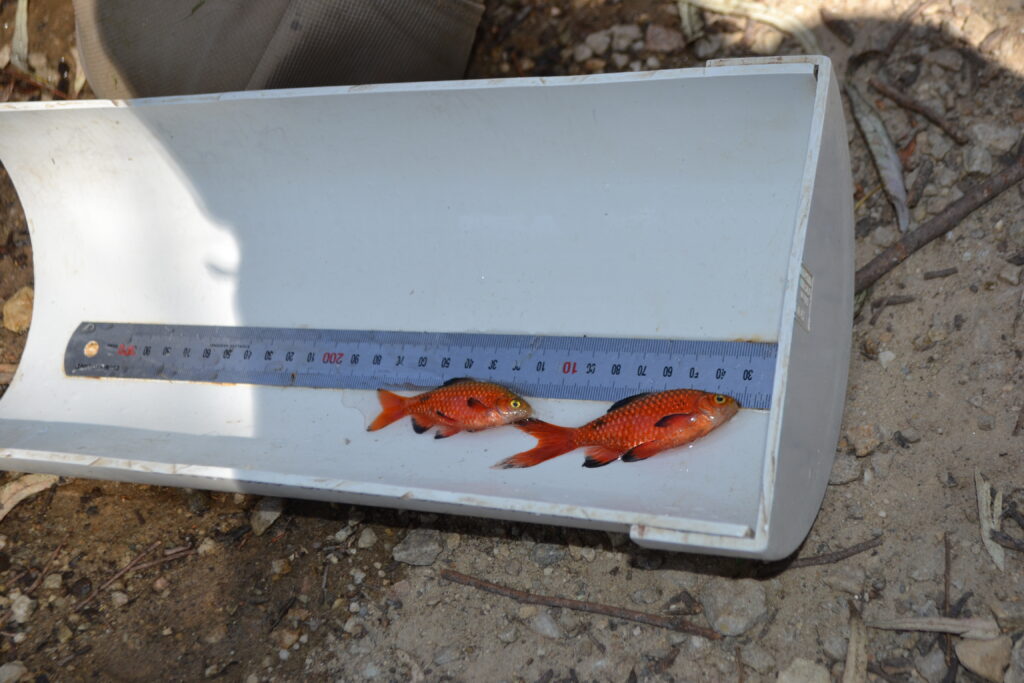


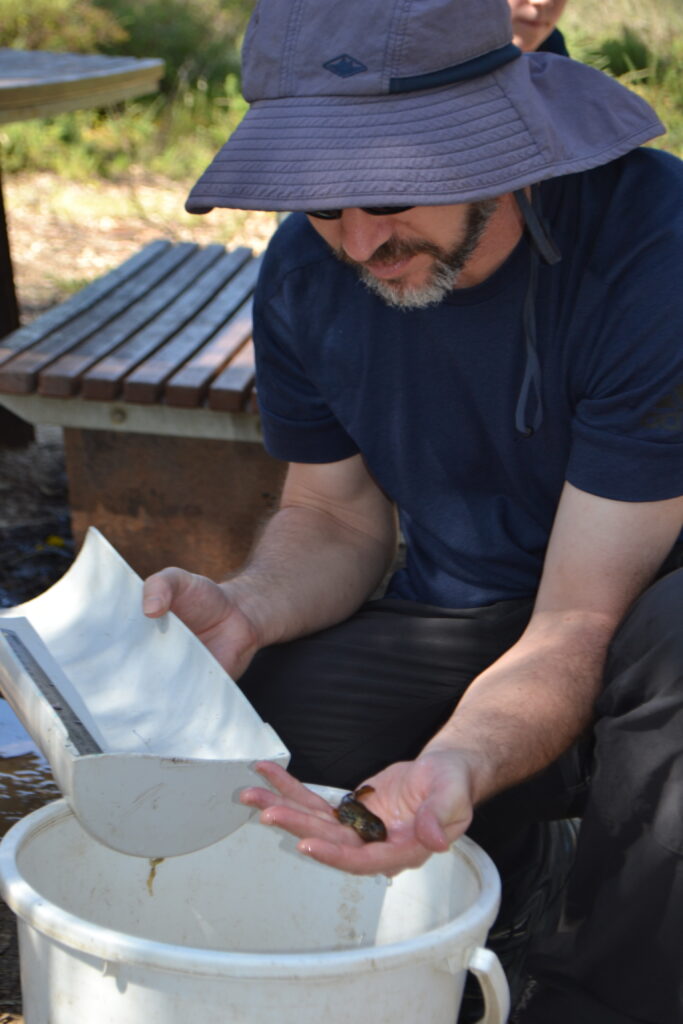
It was a treat to have Dr Michael Hammer join us for the tour and assist in surveying the threatened fish. Michael, who now resides interstate, was the founder of Aquasave Consultants, and a original NGT Committee Member, who donated his private native fish consulting business to NGT back in mid-2012. Michael was pleased to see the Southern Purple-spotted Gudgeons doing so well, and a few individuals who were growing very large indeed, some of the largest we had ever seen! Along with the gudgeons, we found a few other native species, including galaxias (fish), yabbies and a long-necked turtle!
On that note, we’ve just had some exciting news: soon some of these special little fish, bred right here in Oaklands Wetland, will be making their way back to the wild here in SA. There is a release planned this spring which bring the Southern Purple-spotted Gudgeon home to an Adelaide river, for the first time in 100 years! Keep an eye out for an article next month where we share some footage from this momentous and historically significant occasion.
Whilst at Oaklands, City of Marion’s Glynn Ricketts gave a wonderful tour of the wetlands. We all learned some pretty amazing things about this special little oasis in suburbia, including:
- Oaklands Wetlands is a beautiful public space to enjoy, but also serves many other purposes; it is a natural storm water filtration system, an important habitat for birds, animals and plants, and a threatened fish breeding area!
- The beautiful and functional biodiversity-rich public space that is Oaklands Wetlands, home to over 130 species of flora and fauna, … was once a driver training centre! Covered in bitumen and buildings, the area was owned by the state government, but a series of events (and no doubt some passionate, hard-working people with much foresight) saw the area converted to wetlands, for water security following the millennium drought, with additional benefits such as public space and biodiversity.
- Through a series of 10 ponds, water is pumped in from the Sturt River, a nearby watercourse which was converted to a concrete drain in the 60s. Over the course of 3 days, naturally runs through the ponds and is cleaned and filtered by the wetland plants, microorganisms and biofilms along the way. Sediments and pollution including nitrate, phosphate, and herbicide, is removed throughout the process.
- Clean water at the end of the system is pumped into and underground aquifer and supplies the City of Marion with clean water to irrigate local reserves and open spaces.
- The site is dotted with majestic ancient redgums. These were protected during the design of the wetlands. The Friends of Sturt River Landcare group has since worked hard to restore native understorey vegetation.

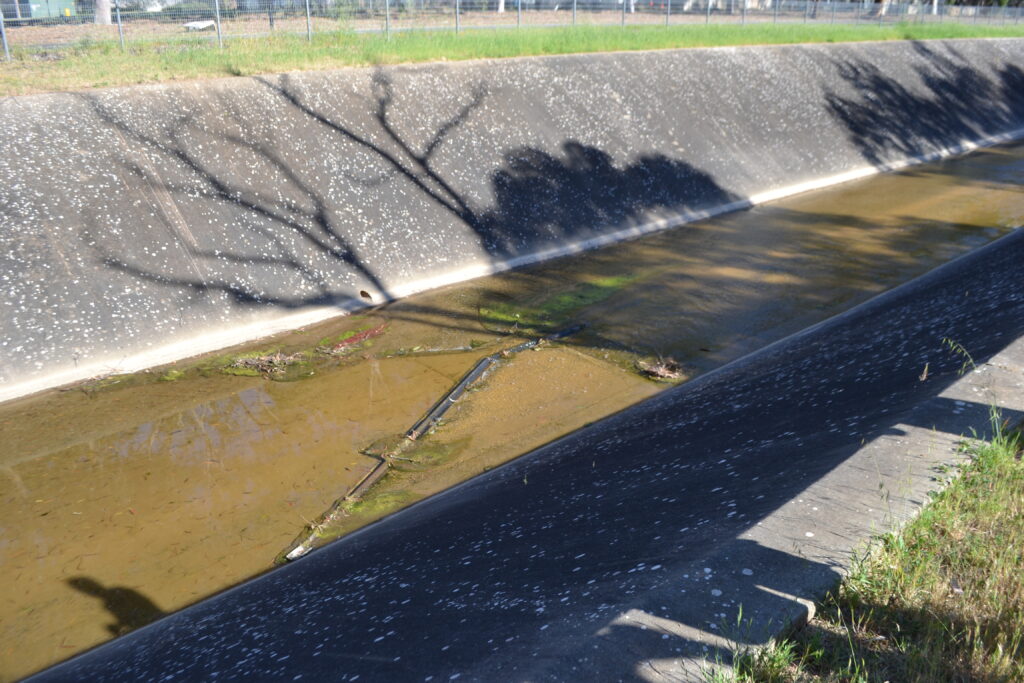
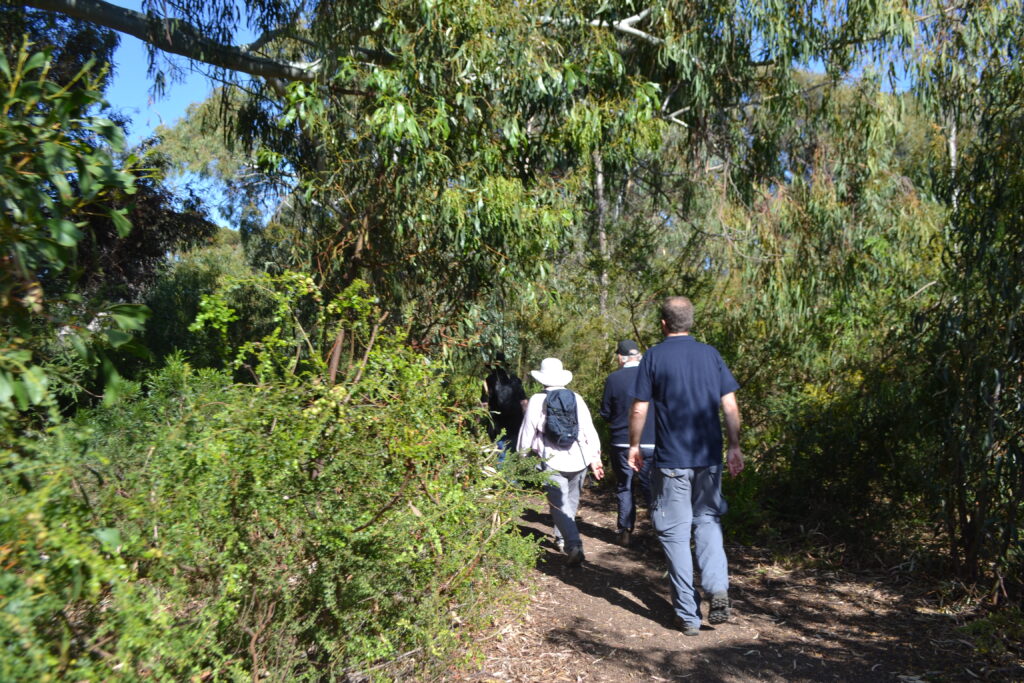
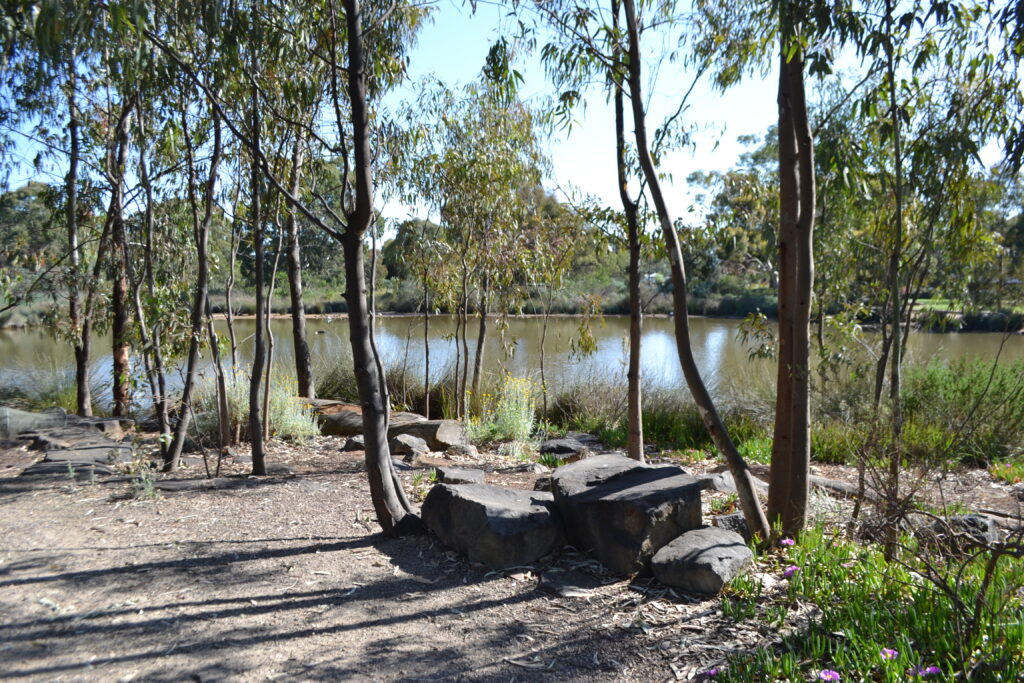
Project partners:

